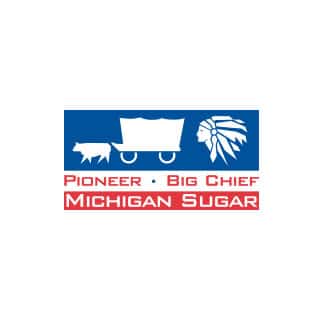March 31, 2025 10 min read

How Food and Safety Training Courses Strengthen Your Reputation in Food & Beverage Manufacturing
Industry:
Solution:

A food safety incident can quickly tarnish a company’s reputation. Just one case of foodborne illness linked to your business can lead to public outcry, a loss of consumer trust, and even legal consequences. In fact, 48 million people in the U.S. get sick from foodborne illnesses each year, and businesses that don’t effectively manage food safety can face severe repercussions.
Implementing robust food and safety training courses for your workforce is an essential solution. This is especially critical in food and beverage manufacturing, where frontline workers handle products that must meet strict hygiene, temperature, and contamination control requirements. Not only does it protect your business, but it also ensures the health and well-being of both employees and customers. Beyond immediate benefits, well-structured food safety training fosters a culture of accountability and professionalism, enhancing long-term business sustainability. Let’s explore how these courses can improve your business’s reputation, mitigate risks, and drive long-term success.
Key Highlights
- Food safety training can reduce the risk of foodborne illnesses and legal issues.
- A properly trained workforce builds consumer trust and improves satisfaction.
- Leveraging technology in training can enhance learning and ensure compliance.
- Food safety training supports adherence to GFSI, FDA, USDA, and industry-specific standards such as SQF or BRCGS.
- A strong food safety culture boosts employee confidence and operational efficiency.
Why Is Food Safety Training Important for Businesses?
Without a comprehensive food safety training program, businesses risk facing numerous challenges. These include reputational damage, financial losses, and potential health hazards. Failure to maintain food safety standards can put a business at a competitive disadvantage, as more consumers are prioritizing transparency and responsible practices. Investing in food safety training ensures that employees are equipped with the knowledge to handle food safely, reducing risks to both the business and the public. For food and beverage manufacturers, training isn’t just a regulatory checkbox—it’s a frontline defense against costly recalls, product waste, and brand-damaging contamination events.
Here are the potential issues businesses may face without proper food safety training:
Reputational Damage
Manufacturers that fail to train employees properly can suffer significant reputational damage. Public health concerns, especially related to foodborne illnesses, can result in negative media coverage and loss of customer trust. In today’s digital world, a single food safety incident can go viral on social media, exponentially worsening the damage to a brand’s image. According to a study, 57% of consumers would stop purchasing from a brand if they became aware of food safety issues. In processing plants, even a single lapse—such as improper cleaning of conveyor belts or cross-contact between allergen-containing and allergen-free products—can spiral into a large-scale crisis.
Legal Consequences
Failing to comply with food safety regulations can lead to legal action. Many jurisdictions require businesses to meet certain safety standards, and failing to do so can result in costly fines or even closure. Food and beverage manufacturing facilities that export goods or work with major retailers may also lose contracts if they fall short of SQF or BRCGS audit expectations.
Financial Losses
The financial toll of a food safety incident can be significant. In addition to fines and legal fees, businesses may experience lost revenue, especially if their operations are disrupted due to safety concerns or a public health issue. According to industry reports, foodborne illness outbreaks can cost companies millions in legal settlements, lost sales, and brand rehabilitation efforts. Facilities may be forced to discard large batches of product, halt production lines, or recall shipments—resulting in costly downtime, product waste, and supply chain disruption.
Operational Disruptions
A food safety crisis can disrupt daily operations. Staff may need to undergo retraining or face disciplinary actions, impacting overall productivity and morale. In severe cases, temporary shutdowns may be required, leading to significant revenue loss and logistical challenges in reopening
Health and Safety Risks
Improper food handling can lead to health risks, such as foodborne illnesses, which not only jeopardize the health of customers but can also lead to workers’ compensation claims. Workplace contamination incidents may also result in long-term health effects for employees, further increasing liability risks for employers. Risks are especially high in facilities producing ready-to-eat (RTE) foods, where products are not cooked or further processed before consumption. These environments, along with cold storage areas and operations handling high-risk items like dairy, meat, or fresh produce, demand strict hygiene and contamination control.
Expert-Led Online Food Safety Manufacturing Training Courses
Aligned with GFSI, FDA, SQF, and BRCGS standards, these courses help to reduce contamination risks, uphold product quality, and boost safety and productivity across facilities.
View Courses
How Can Food Safety Training for Staff Impact the Public Perception of Your Business?
A trained workforce has the power to positively influence public perception. In food and beverage manufacturing, reputation is closely tied to product safety, traceability, and consumer confidence that proper safety protocols are followed at every stage of production. When consumers are confident in the safety of the food they consume, they are more likely to recommend it to others. Properly implemented food safety training demonstrates your commitment to quality and the well-being of your customers.
Here’s how comprehensive training management can positively impact your reputation:
Enhanced Consumer Trust
Training employees to follow food safety guidelines boosts consumer confidence. Customers are more likely to trust businesses that prioritize health and safety, knowing that they are less likely to encounter foodborne illnesses. In a competitive market, this trust can become a key differentiator, influencing purchasing decisions and brand loyalty.
Reduced Risk of Foodborne Illnesses
Proper food safety training helps prevent contamination and cross-contamination, drastically reducing the risk of foodborne illnesses. This leads to fewer complaints, higher customer satisfaction, and a more favorable public image. A single outbreak can have devastating consequences, so proactive prevention is essential.
Improved Compliance and Inspection Results
Food safety training ensures your business is compliant with local regulations. This can result in better inspection scores and fewer violations, which enhances your reputation as a reliable and responsible business. Displaying high inspection ratings can be a powerful marketing tool, reassuring customers about your commitment to safety. In addition, well-trained staff are more confident during audits and inspections and are better equipped to follow protocols like metal detection verification, allergen swabbing, or clean-in-place (CIP) procedures.
Elevated Professional Standards
A business with a well-trained workforce is seen as more professional and dedicated to maintaining high standards. In the food and beverage industry, where turnover can be high, standardized training improves consistency across shifts, teams, and even different production sites. This can set you apart from competitors and position your company as a leader in the industry. Customers and business partners alike prefer to associate with brands that demonstrate responsibility and excellence.
Increased Customer Satisfaction
Customers who feel confident in the safety of the food they’re consuming are more likely to return. Proper training ensures that your staff delivers high-quality products, resulting in repeat business and customer loyalty. Word-of-mouth recommendations from satisfied customers can further enhance your brand’s reputation and credibility.
Strengthened Long-term Business Sustainability
Investing in food safety training ensures that your business remains sustainable in the long term. By reducing the risk of incidents and improving customer satisfaction, your business can thrive and maintain a positive reputation for years to come. Sustainability in the food industry isn’t just about environmental responsibility—it’s about maintaining public confidence and operational resilience.

Best Practices for Designing an Employee Food and Safety Course
Developing an effective food safety training program requires careful planning and attention to detail. Here are six best practices to consider when designing food and safety training courses for your workforce:
1. Conduct a Comprehensive Needs Assessment
Before designing your training program, assess the specific needs of your employees. Consider the type of food your business handles, the skill level of your workers, and any regulatory requirements that apply to your industry. Tailoring training to specific roles ensures greater effectiveness. For example, training needs may differ between a beverage bottling and a meat processing facility—both in terms of regulatory focus and operational hazards.
2. Tailor Content and Delivery Methods
Utilize training content that is relevant to your workforce and choose delivery methods that suit their learning styles. This could include hands-on training, online courses, or a blend of both to ensure maximum engagement and retention. Utilize training that uses real-life scenarios from your production environment, such as identifying signs of spoilage, responding to an equipment sanitation issue, or properly handling allergenic ingredients like soy or nuts.
3. Ensure Regulatory Compliance and Documentation
Ensure that your training program meets all relevant food safety regulations. Documentation is crucial for compliance, and it’s important to keep records of training sessions for future reference and inspections. Maintaining detailed records not only helps with regulatory audits but also allows businesses to track employee progress and identify areas for refresher training. In addition, if your facility undergoes third-party audits, robust documentation can demonstrate compliance with preventive controls, HACCP plans, and traceability standards.
4. Implement Continuous Evaluation and Improvement
Food safety training should be an ongoing process. Regular evaluations will help identify areas for improvement and ensure that your program remains effective and up to date with changing regulations. Gathering employee feedback and analyzing food safety incident trends can also provide valuable insights for refining training content.
5. Foster a Food Safety Culture
Encourage a culture of food safety in your manufacturing facility. This involves promoting safe food handling practices and making food safety a priority at all levels of the organization. Recognizing and rewarding employees who demonstrate exceptional food safety practices can reinforce the importance of compliance and encourage team-wide commitment. In production environments, reinforcing good manufacturing practices (GMPs) and rewarding proper hygiene behavior—like handwashing and PPE use—builds long-term habits.
6. Leverage Technology for Enhanced Learning
Use modern training tools such as eLearning platforms and virtual simulations to deliver engaging and effective training. Technology can streamline the process, making it easier to track progress and ensure consistent training delivery. Incorporating mobile-friendly training options can further improve accessibility, allowing employees to complete courses on the go.
Online Food Safety Training Course Catalog
Deliver in-depth, engaging content that aligns with the latest standards and guidelines in food safety
Download Catalog
Deliver Your Food Safety Training Courses Online with Vector Solutions
Vector Solutions offers a comprehensive online food safety training that makes it easy for manufacturers to implement and manage their food safety programs. Here are some of the key features and benefits of our online food protection courses:
- Flexible Learning Options: Employees can access training anytime, anywhere, allowing for easy integration into your existing schedule.
- Interactive Content: Our courses feature interactive lessons that engage employees and ensure they retain the knowledge.
- Regulatory Compliance: Courses are aligned with GFSI standards and support SQF, BRCGS, and HACCP compliance for food and beverage manufacturers.
- Progress Tracking: Monitor employee progress and performance through our robust Learning Management System (LMS).
- Scalable Solutions: Whether you have a small team or a large workforce, our platform can scale to meet your needs.
Book a demo today and discover how Vector’s food and safety training courses help businesses improve the health and well-being of their workforce.
Frequently Asked Questions
What Food Safety Subjects Do I Need to Cover in My Training Course?
A comprehensive food safety course should cover topics such as food handling, sanitation practices, cross-contamination prevention, personal hygiene, and temperature control.
How Often Should Employees Complete a Food Safety Training Course?
In food and beverage manufacturing, food safety training should be delivered during onboarding to ensure new employees understand key protocols like cleaning and sanitizing procedures, allergen controls, and personal hygiene requirements from day one. Ongoing training should be conducted at least annually, with more frequent refreshers for roles such as line operators, sanitation staff, and quality assurance technicians.
Additional training may be required when there are regulatory updates, new equipment or production lines, or following any food safety incidents or audit findings. Maintaining consistent training means teams stay compliant, confident, and aligned with evolving operational demands.
How Do I Measure the Effectiveness of My Food Safety Training Program?
For food and beverage manufacturers, effectiveness can be measured by observing employee behavior on the production floor, such as proper handwashing, PPE use, allergen separation, and sanitation practices. Monitor internal audit scores, regulatory inspection results, and GFSI audit findings (e.g., SQF or BRCGS) for signs of improvement.
You can also track incident reports, product holds, contamination events, or customer complaints to determine if training reduces food safety risks. Gathering feedback from supervisors and frontline workers helps identify knowledge gaps and opportunities to improve future training content.








